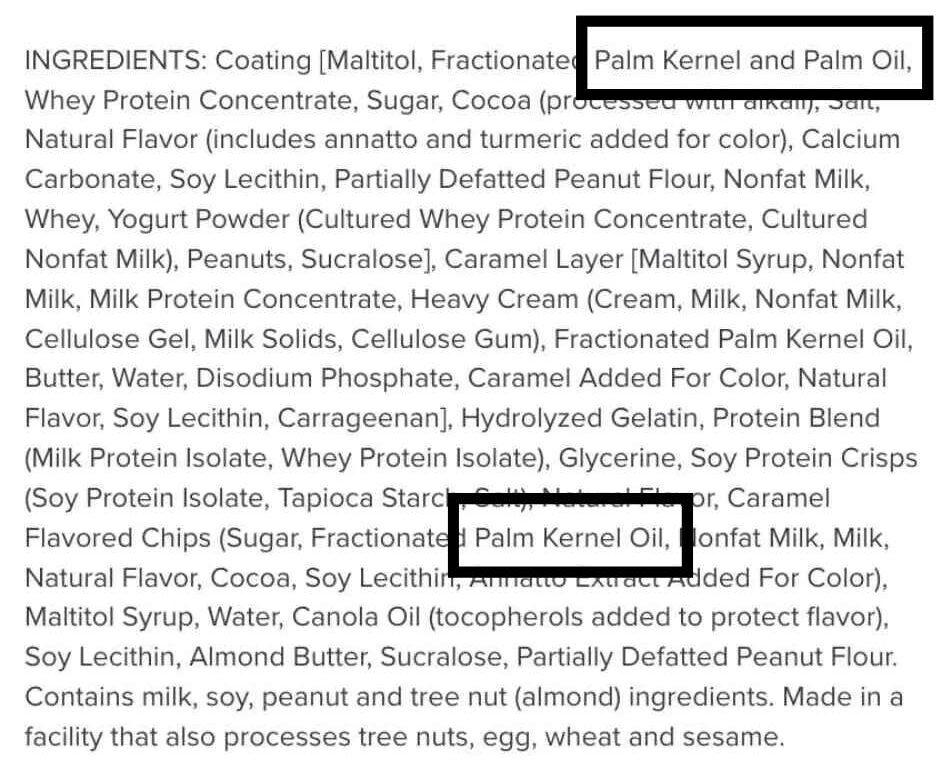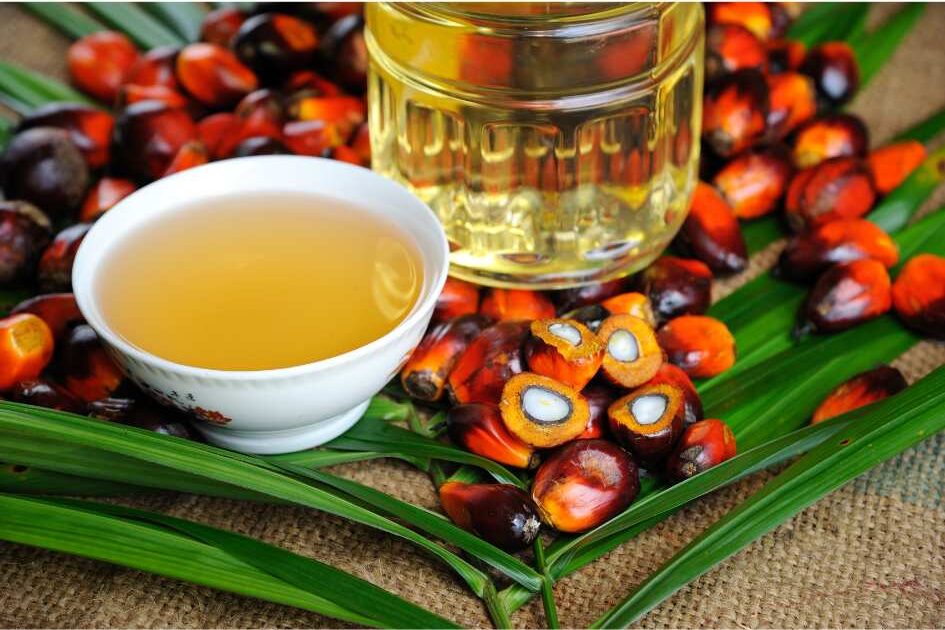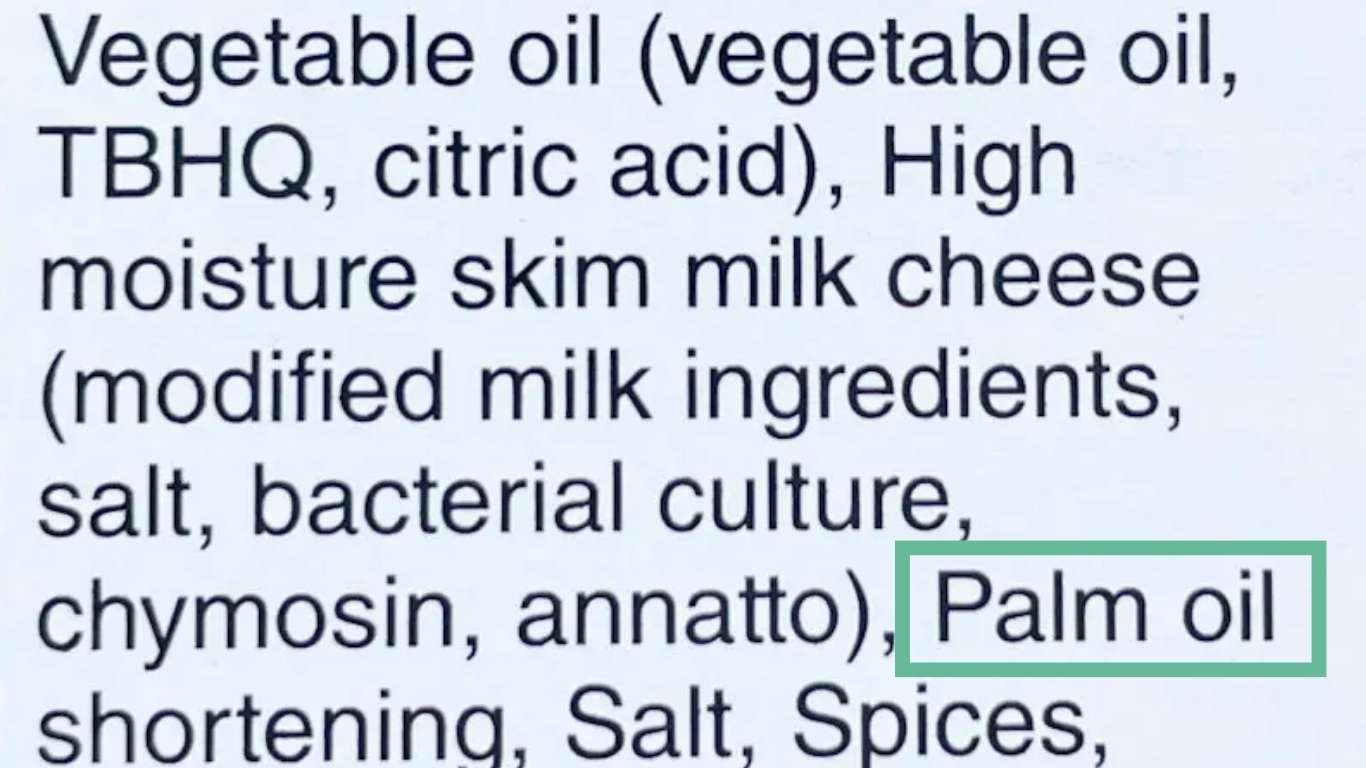You may have noticed this ingredient in your favourite chocolate treat or protein bar and wondered – is palm oil bad for you? As part of our Ingredient 101 series, we’re bringing you everything you need to know about this common food ingredient, including what palm oil is, its common uses, and its health implications.
What is Palm Oil?
Palm oil is a type of vegetable oil extracted from the fruits of palm plants. Though it has existed for many years, traditional methods of palm oil extraction were very labor-intensive and led to low-quality oil. The more recent development of larger plantations with better technology and automation has helped improve the efficiency of the production process and quality of the end product. Today, palm oil is used in large-scale food production and is considered the most highly-demanded vegetable oil in the world (1).

Is Palm Oil Bad for the Environment?
The rapid expansion of the palm industry over the last few decades has led to concern and criticism over the environmental impact that large palm plantations have. These concerns include the loss of tropical rainforests due to large land clearance to build plantations, destruction of wetland ecosystems, pollution of waterways, improper disposal of mill wastes, and contamination of rivers due to leaching of nutrients and pesticides. This has reduced wildlife habitats and contributed to emissions of CO2 and other greenhouse gasses that contribute to climate change (1).
How is Palm Oil Used in the Food Industry?
Palm oil is commonly found as an ingredient in packaged foods such as protein bars, granola bars, cereal, crackers, and chocolate. There are three types of palm oil used in the food industry:
- Palm Stearin: palm stearin is a type of palm oil with a naturally high melting point of 44-60 degrees Celsius. The main fatty acids in palm stearin are palmitic and oleic acid, both saturated fats. This type of palm oil became popular in the food industry as it is solid at room temperature and can be obtained from palm plants without the use of a hydrogenation process (read: trans fat-free). Even a small amount of solid palm stearin added to products, such as chocolate, can significantly improve the texture and mouthfeel of foods (2).
- Palm Kernel Oil: this palm oil is semi-solid at room temperature with a melting point of 26-28 degrees Celsius. The main fatty acids found in palm kernel oil are lauric acid and mysteric acid, both saturated fats. Unlike other saturated fats, palm kernel oil contains high amounts of medium-chain triglycerides, which help improve the mouthfeel and consistency of foods. However, the application of palm kernel oil is limited in the food industry compared to other types of palm oil as it is not solid at room temperature (2).
- Palm Kernel Stearin: this type of palm oil is semi-solid at room temperature with a melting point of 33 degrees Celsius. It is composed mostly of lauric acid and mysteric acid, both saturated fatty acids. Similar to palm kernel oil, palm kernel stearin contains high amounts of medium-chain triglycerides, which help improve the mouthfeel and consistency of foods. However, its application is limited in the food industry as it is not solid at room temperature (2).

What are Medium Chain Triglycerides?
Medium-chain triglycerides (MCTs) are a type of saturated fat. MCTs are metabolized differently from other saturated fats due to their size. Most saturated fats found in solid fat sources such as butter or lard are long-chain triglycerides (LCTs) and are digested in the small intestine.
Due to their smaller chain size, MCTs can be delivered directly to the liver to be metabolized and utilized as an immediate energy source. Since MCTs can be metabolized quickly, they are less likely to be deposited and stored in adipose tissue than LCTs (3). MCTs have been a popular ingredient among consumers over the recent decade, making palm kernel oil and palm stearin appealing food ingredients in the food industry.
What Are the Health Implications of Palm Oil?
Palm oil is a source of saturated fat which has raised concern with health authorities for years. All types of palm oils are rich in saturated fats, with palm kernel oil containing 80% saturated fat, palm kernel stearin containing 95% saturated fat, and palm stearin containing 87% saturated fat (2). While we know that a diet high in saturated fats can increase your risk of cardiovascular disease, not all sources of saturated fats have an equally negative impact on heart health.
Saturated fatty acids and serum lipid levels
Research has investigated the effects of different types of saturated fatty acids on lipid profiles. This research has shown that stearic acid and palmitic acid may have a neutral to favorable effect on serum lipids compared to lauric and mysteric acid (6). This would indicate that the consumption of palm stearin oil may not harm serum lipid levels compared to palm kernel oil, palm kernel stearin, or other sources of saturated fats.
However, this has not been shown consistently in research. A systematic review looking at cardiovascular disease mortality risk found that a higher intake of palmitic acid was associated with an increased risk of heart attack (4). It’s important to note though that the studies used to assess cardiovascular disease mortality in this review were deemed of very low quality due to limitations in trial design.
Palm oil and serum lipid levels
A 2021 Systematic Review of Palm Oil and Cardiovascular Disease found that palm oil intake significantly increased LDL cholesterol (bad cholesterol) and total cholesterol levels compared to polyunsaturated and monounsaturated oils. However, their effect on LDL and total cholesterol levels is not as significant as other sources of saturated fat, such as lard (4). Palm oil was also found to increase HDL levels (good cholesterol) compared to polyunsaturated fats and other saturated fats, but not when compared to monounsaturated fats (4).

Is Palm Oil Bad for You? Bottomline
Both the American Heart Association and the Heart and Stroke Foundation of Canada recommend limiting all sources of saturated fats in the diet (7, 8).
While the saturated fats found in palm oil may not be as harmful as those found in animal sources, such as lard, they are likely not as beneficial to health as mono and polyunsaturated fats. The intake of small amounts of palm oil in packaged foods used in moderation is likely not cause for concern if the rest of your diet is rich in sources of poly and monounsaturated fats such as nuts, seeds, olive oil, avocados, and fatty fish.
Related Posts:
- Is Canola Oil Bad for You? Dietitian Review
- Lecithin – Food Ingredient Review
- What Are Tocopherols? Ingredient 101
Sources:
- Lai Oi-Ming, et al. Palm Oil – Production, Processing, Characterization, and Uses, AOCS Press, 2012.
- Chunhuan Liu, Zong Meng, Xiuhang Chai, Xinyu Liang, Michael Piatko, Shawn Campbell, Yuanfa Liu, Comparative analysis of graded blends of palm kernel oil, palm kernel stearin and palm stearin, Food Chemistry, Volume 286, 2019, Pages 636-643, ISSN 0308-8146, https://doi.org/10.1016/j.foodchem.2019.02.067.
- Lee YY, Tang TK, Chan ES, Phuah ET, Lai OM, Tan CP, Wang Y, Ab Karim NA, Mat Dian NH, Tan JS. Medium chain triglyceride and medium-and long chain triglyceride: metabolism, production, health impacts and its applications – a review. Crit Rev Food Sci Nutr. 2022;62(15):4169-4185. doi: 10.1080/10408398.2021.1873729. Epub 2021 Jan 22. PMID: 33480262.
- Unhapipatpong C, Shantavasinkul PC, Kasemsup V, Siriyotha S, Warodomwichit D, Maneesuwannarat S, Vathesatogkit P, Sritara P, Thakkinstian A. Tropical Oil Consumption and Cardiovascular Disease: An Umbrella Review of Systematic Reviews and Meta Analyses. Nutrients. 2021 May 4;13(5):1549. doi: 10.3390/nu13051549. https://pubmed.ncbi.nlm.nih.gov/34064496/
- Ismail SR, Maarof SK, Siedar Ali S, Ali A. Systematic review of palm oil consumption and the risk of cardiovascular disease. PLoS One. 2018 Feb 28;13(2):e0193533. doi: 10.1371/journal.pone.0193533. https://pubmed.ncbi.nlm.nih.gov/29489910/
- O’Sullivan TA, Hafekost K, Mitrou F, Lawrence D. Food sources of saturated fat and the association with mortality: a meta-analysis. Am J Public Health. 2013 Sep;103(9):e31-42. doi: 10.2105/AJPH.2013.301492. Epub 2013 Jul 18. PMID: 23865702. https://pubmed.ncbi.nlm.nih.gov/23865702/
- Heart and Stroke Position Statement on Saturated Fat, 2015.
- Saturated Fat, American Heart Association, 2021.


